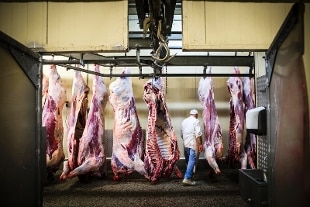- Coronavirus, outbreaks in the Mantua between slaughterhouses and delicatessens
- Second wave. Crisanti: in autumn in Italy like the German slaughterhouses
- Slaughterhouse outbreak in Germany, R0 2.88. Chancellor spokesman: "We will do everything we can"
- Coronavirus, Germany: more than 1,300 infected in the Guetersloh slaughterhouse
Share
06 July 2020 The humidity and cold of the cold rooms is the explanation of the cases of Coronavirus infections in different slaughterhouses around the world. But there are no dangers to eating meat. This is explained by the epidemiologist Pier Luigi Lopalco, Professor of Hygiene at the University of Pisa, head of the task force of the Puglia Region for the Coronavirus emergency.Lopalco coordinated the Bari ASL investigation into a case in a local slaughterhouse. Now comes the news of another case in the Mantua. But in the last few weeks there have been numerous reports in other parts of the world: in the largest slaughterhouse in Europe, in Guetersloh, in the German state of North Rhine-Westphalia, as well as in Ireland, France, the United Kingdom, Holland, Spain, Canada and United States where it affected nearly 200 slaughterhouses.
The case studied by Lopalco concerned a facility in Palo del Colle in the province of Bari where 71 employees tested positive for the virus. For Lopalco, who has just published the results of his investigation, there is no single cause but more reasons than all together they make these work environments particularly at risk.
These factories have some particular environmental conditions: areas where pressurized water jets are used and workers are in the midst of a cloud of hot water and steam; and areas where workers work in a huge cold store. "The cold produces a lowering of the defenses" explains the expert. But meat is safe, Lopalco concludes, assuring that "the food route is excluded from contagion".

